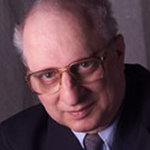April 22, 2010
Israel: The aggressor
Peter Larson wonders why Canada has a free trade treaty with Israel while Israel continues to violate international law in occupied Jerusalem, Gaza and the West Bank and while it continues to seize land from the Palestinians, in particular with the separation wall.
Larson chairs the Middle East Study Group of the Canadian International Council (Ottawa - Capital Region).
The Canadian International Council “is a non-partisan, nationwide research council established to strengthen Canada’s foreign policy.”
It includes a number of prominent individuals with long careers in the public service.
Larson spent two weeks visiting the West Bank and Israel. In a talk on April 11 at Ottawa’s First Unitarian Congregation he gave an illustrated talk about his trip and about the historical background, with particular emphasis on Jerusalem.
According to Larson, Jerusalem has historically been an Arab political and economic centre, though never a capital.
Palestine was part of the Ottoman Empire, and after World War I it became a British protectorate. The British had played a double game, on the one hand promising the Palestinians independence for support against the Ottomans, but they also promised it to the Jews in the Balfour Declaration.
New Jewish immigrants at that time tended to settle in the best farmland, in the coastal area, and in the process they displaced Palestinians. They bought land, often from absentee owners, and worked it with modern methods and technology. As a result, they eliminated reliance on Palestinian workers, and the Palestinians lost their livelihood. Palestinian farms were more labor-intensive. This displacement led to conflicts between Palestinians on the one hand and Jews and British on the other. The British responded by trying to control Jewish immigration, and the Zionists responded by underground activity to continue the immigration.
The United Nations adopted a partition plan in 1947 giving the 600,000 Jews 56% of the land and the 1.2 million Palestinians 43%. The justification for the inequality was the expectation that Jewish refugees from Europe would increase the number of Jews. Jerusalem was to be an international city.
After the fighting at the time of the creation of Israel, Israel ended up with 72% of the land. Egypt got Gaza and Jordan got the West Bank. Jerusalem was divided between Israel and Jordan. The 1967 war gave Israel more land, and the separation wall has expropriated even more. Israel also took control of Gaza and all of Jerusalem, as well as the West Bank.
Lawson spoke about the separation wall. After the construction of the wall progressed to a significant degree, suicide bombing stopped. Israelis claim that the wall was therefore successful. However, Palestinians claim that the reason that the suicide bombing stopped is that both Fatah and Hamas found the tactic to be no longer useful.
The wall cuts Bethlehem off from Jerusalem. As a result, a Palestinian working in East Jerusalem who lives in Bethlehem, for instance, needs to get permission to pass through the wall from the Shin Beit, Israel’s secret police, which checks the person’s politics and that of his family. It may also squeeze the person for intelligence information.
In order to make the trip from Bethlehem to Jerusalem, Palestinians line up at 4 a.m. to get to Jerusalem at 7 a.m. and to their jobs half an hour later. On the line-up, there are no washroom facilities, no food, and no water.
Larson and others on the tour lined up with the Palestinians to see what it was like, but after waiting for an hour they feared that they would be late for their next meeting. Therefore, they used a cell phone to call their bus, which had gone through to the other side to wait for them, and called it back. It returned quickly and picked them up, driving them back through the checkpoint in ten minutes.
Larson showed a slide of a condominium development in the West Bank just outside Jerusalem. On the site was a sign giving the name and phone number of an agent in New York who sells these to American Jews. In Jerusalem itself, his slides showed a modern West Jerusalem, which appeared like any major Western metropolis. The slide of East Jerusalem displayed what appeared to be something out of the Third World.
In Jerusalem, there is an ongoing program of demolishing Palestinian homes. Larson says that about two a week are destroyed, over 20,000 since 1967. Palestinian construction in East Jerusalem is often illegal, built without permission, but Palestinians almost never receive permission to build. Besides, Palestinians claim that Israel has no right to control construction there, as it is occupied territory.
Besides demolition, Palestinians in East Jerusalem are victims of evictions and seizures of houses by religious Jews.
Larson showed a short clip of a forcible eviction. One of the men in Jewish religious garb is telling a man who was evicted that God gave the Jews the whole land.
Larson had a little time to touch on matters related to the West Bank.
Access to water is a major problem for West Bank Palestinians, since Israel gives a heavy supply of the resource to the settlers and since the Palestinians are not allowed to drill wells.
In the Hebron area, American settlers throw garbage and filth on the Palestinians. They also attack Palestinians and international observers.
As far as Israel itself is concerned, the Negev is the scene of another massive land grab. 85% of the Negev is designated as a military area, and Bedouin are being forced out. At the same time, the Jewish National Fund is working to bring Jewish settlers in.
According to Larson, Palestinians are living in fear. They do not know what to do. Israel is far more powerful. They try to resist, for the most part non-violently.
Israel wants to negotiate but not to come to an agreement. During negotiations, Israel would continue their campaign of increasing settlement activity and displacing Palestinians.








